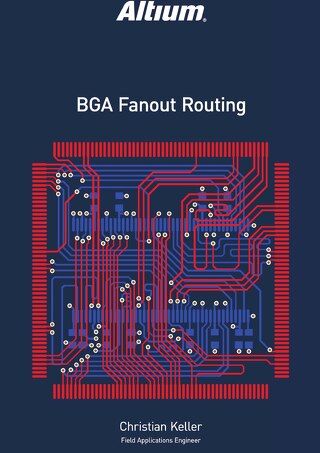Assembly Variants Management Systems Keeps Designs Synchronized

Altium Designer gives you a robust centralized variant management system. You can define any number of design variations of a base design, then manage component parameters and configure the variant components as fitted, not fitted, or alternate parts. As these variants share the same bare board and have impact on the assembly process only, we call these assembly variants. Now you will see how variant management in Altium Designer can harmonize design variations without compromising synchronization during different design steps.
Product customization is increasingly popular to satisfy customer demand as both time-to-market and the complexity of products continue upward without abatement. By making variations of a baseline product, the new products can address different markets and requirements.
With the help of powerful variant components management capability in Altium Designer, you can manage product variations so that all versions remain in sync over the product lifetime. Design variants could include an increased temperature range by substituting components, or replacing or omitting components to meet different market requirements such as a different power supply or smaller display. Product variations are managed within a complete product workflow, from schematic design to assembly manufacturing, to synchronize this variation within one complete project.
Read on to learn about the problems designers face when using design variants and how Altium Designer can help to address those challenges with state-of-the-art functionalities during different design phases.
WHY DO YOU NEED TO CONSIDER DESIGN VARIATIONS?
Let’s say you are developing a PCB for a smartwatch that comes in three different memory variations; 4, 8 and 16 GB. Together with variations in hardware requirements, this watch should target different markets. The traditional approach would be to design three different PCBs for different hardware requirements and change parametric information to meet the market demand. However, with the complexity of today’s circuits and PCBs, this approach will delay the product time to market and will increase the cost.A better solution is to create a single base design and define variations in it by configuring the components and their parameters. A single reference design for all variations rather than to create a new variation from scratch yields quicker design completion and costs less. However, companies often have worldwide teams responsible for a single project, so variations in one part of the product may lead to errors and unsynchronized changes in another during the product lifecycle. Altium Designer can synchronize the workflow automatically.
DESIGN VARIANTS AND INDUSTRY CHALLENGES
What magnitude is design variant management a challenge in the industry? In a recent survey by Aberdeen Group, “Importance of Configuration Management in Industrial EquipmentManufacturing”, 47% responded: “Market demand for customized and complex products is one of the top pressures they face during product development. ”In another survey, “PCB Design: Improving Profitability with PCB Design Best Practices”, 44% of the respondents find that: “Frequent design changes is one of the major challenges in PCB design which leads to delays and increase in project management cost if not managed properly.”
These challenges become critical in the production phase when you send production files to the manufacturer, because any data inaccuracy may lead to product failure. To handle such changes effectively, variations are important to manage throughout the product lifecycle. In the PCB design cycle these changes are done on the schematic or PCB level and are synchronized with production data. Keeping production files such as BOMs and assembly outputs up-to-date for all design variations requires a managed workflow. This is even more important if multiple participants are involved in a design to ensure a consistent workflow. Any miscommunication during the product design may lead to a design with low quality, increased cost, and greater time-to-market.
CENTRALIZED VARIANT CONFIGURATION
The key to using assembly variants in any design is centralized management. In Altium Designer this unique functionality is integrated to improve the synchronization between different design stages. Within this single variant management dialog, you can define new variants as well as edit component parameters, leaving Altium Designer to automatically take care of synchronization between schematic, PCB and output files. To further support alternate components from different sources, the functionality is extended for independent libraries, database libraries, as well as for Vault based components.
To ensure parts are indeed swappable, an intelligent checking mechanism is implemented to check pin compatibility between the base and alternate component. This functionality makes sure that the pin type and the location is the same for both components. The user interface, shown in Figure 1, is easy-to-use and includes these additional functions:
- Configure multiple components at a time.
- Set variant parameters along with project and schematic level parameters.
- Manage display data using filters for different component types.
- Generate variant reports for documentation.

Figure 1 - Variant Management Dialog
GRAPHICAL DISPLAY OF VARIANTS
In variant configuration dialog, you can view how components are displayed on schematic and output drawings. When components are added or edited, a cross-check runs to recognize any errors.
As shown in Figure 2, you can choose to display not-fitted components as well as parameters. This allows viewing changes in real time for each change in a variant. Similarly, for assembly drawings you can select the appropriate drawing to show not fitted components easily on a generated PDF.

Figure 2 Variant Drawing Style
Along with representation on the schematic, variants can also be viewed in the PCB editor as shown in Figure 3. Since all footprints are shown on the PCB, variations can only be noticed if components have a 3D body. To support alternate parts, Altium Designer supports two different footprints of a same component without worrying about compatibility of the alternate component with other PCB primitives.
Figure 3- Variants In The PCB Editor

SYNCHRONIZATION WITH CENTRALIZED LIBRARIES
When a component or parameter needs to be changed In an enterprise environment where you have centralized component libraries, Altium Designer can update the schematic or PCB files from those libraries, and now, for variants as well. For any fitted or alternate part, you update parameters directly from the variant management dialog, as shown in Figure 4. You choose which parameter or component should be updated for any defined variant, giving you more freedom to make customized changes in a library.

Figure 4: Parameter And Components Update
VARIANTS IN OUTPUT DOCUMENTS
Variants need to be included in project outputs such as a BOM or an assembly drawing. If you do not want to include certain variant components in the BOM, the traditional approach would be to identify this component in a design and mark it manually so that the manufacturer can exclude it from production. However, this is error prone and time consuming as well and can lead to a lower quality product. Instead, Altium Designer handles it automatically.
Including variants in the output documents a powerful capability of Altium Designer that automates the variant documentation for all output files at once and also allows you to have a different variant for each document separately. This way, you can have different versions of the same output to address different market requirements.

Figure 5: Variants in Output Job
Variants affect different output documents including:
- Bill of materials
- Schematic and PCB Prints
- PCB Design 3D prints and videos
- Assembly drawings
- Pick and place files
- Test point report
To further support bulk production of different outputs at once, variant support is extended in the configuration manager as well to synchronize workflow within the whole project lifecycle.
VARIANT INTEGRATION IN MODERN DRAWING SYSTEM
Beginning with version 16.1, Altium PCB Draftsman incorporates further content flexibility and detail in the output files for the PCB manufacturer. The approach to variant management is to provide cutting-edge technology in one complete software package including PCB Draftsman. You have an intuitive user interface within Draftsman to support assembly variants for different production files.
CONCLUSION
Design variation is critical and with increasing component counts, it is becoming important to have intelligent systems to manage variants effectively. Fortunately, Altium is providing this capability not only to manage variants for complete product design but also within single software package to ensure high user productivity.









